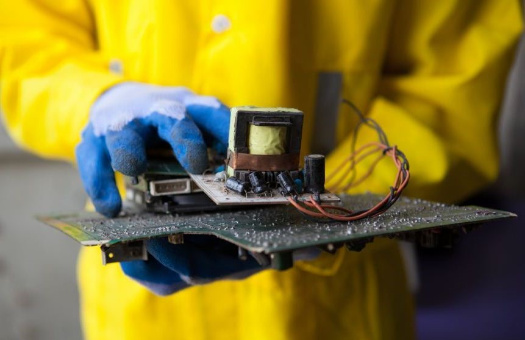America Recycles Day is this Friday, and each year we celebrate by hosting recycling drives on our campuses around the country. Each year I’m amazed at what we collect to repurpose: used computers, cell phones, eyeglasses, pet items, tennis shoes. Whether reused in current form or broken down into component parts, the materials get a second life.
And it seems simple to us as consumers. We drop off a product and someone else handles the rest. We don’t always see the complexity behind the scenes. The truth is recycling and reusing materials is hard, and it’s especially hard for technology, which contains a surprising number of elements from the periodic table. With electronics becoming the fastest growing waste stream in the world, it’s precisely this challenge that will define our opportunity to lead the industry over the next decade.
Today Dell Technologies announced our 2030 social impact goals, and we shared how advancing sustainability is a critical element of how Dell will have the greatest impact on society. More specifically, we shared moonshot goals extending a commitment to the circular economy. By 2030:
- We will recycle an equivalent product for every product a customer buys
- More than half of all product content will be made from recycled or renewable material
- We will use 100% recycled or renewable material in all our packaging
We’ve been working toward this concept of circularity for a while — providing recycling services to our global customers for over 20 years, and even achieving our 2020 goal of using 100 million pounds of recycled content early. Sure, Dell Technologies is a software producer. One of the world’s largest. But the issue is rooted in material goods. Our 2030 goal takes on the expansive Dell Technologies hardware portfolio and the breadth and depth of materials in our products and packaging.
To put this in perspective, technology can contain up to half the elements on a periodic table and many of them are technically recoverable. A typical computer contains plastics, metals, metalloids, ceramics, copper, carbon fiber, silicon, glass, steel, aluminum and countless other obscure materials we’ve probably never heard of. Each material comes with complexity when it comes to reuse.
 Water bottles, for example, are typically made out of PET. We generally do not use PET to make our products (the chassis for many Latitude laptops, for example, is ABS plastic with polycarbonate). Mechanical recycling forces you to stay with the same kind of plastic. So PET can come back as PET. This greatly limits the number of available recycling streams.
Water bottles, for example, are typically made out of PET. We generally do not use PET to make our products (the chassis for many Latitude laptops, for example, is ABS plastic with polycarbonate). Mechanical recycling forces you to stay with the same kind of plastic. So PET can come back as PET. This greatly limits the number of available recycling streams.
What’s more, mechanical recycling slightly degrades the plastics. They pick up impurities and the process of re-melting them can potentially weaken the structure. They can’t always return to their original state and can only be recycled so many times before compromising the quality. That’s why recycled content typically gets mixed with virgin plastics. Our closed-loop plastics program – which takes ABS plastic from e-waste and recycles it back into new product components – is a 35% blend. Across our product lines, you will find some that have no recycled content while some have as much as 50%.
What gets exciting, is when you can find the perfect material match in someone else’s waste. Carbon fiber is a great example. Turns out computers use a similar grade carbon fiber as airplanes. So we reclaim aerospace material for Latitude, our commercial notebook line. To date, Dell has prevented more than 2 million pounds of carbon fiber from ending up in landfills.
And in this case, the benefits go far beyond the environment. We’ve partnered with Carbon Conversions, a start-up based in South Carolina with a mission to reclaim and recycle carbon fiber. Carbon Conversions has redesigned and reengineered the papermaking process to produce carbon fiber non-woven fabrics, bringing new growth to an area historically impacted by overseas manufacturing.
Finding more partners like Carbon Conversions will be important. It will also be important to increase our own recycling streams dramatically (i.e. you all have a role to play too). We must make it as easy as possible for you to recycle.
The future will take collaboration, diligence, and creativity. It will take constant experimentation, failing in some cases, but nevertheless pushing the industry forward. We don’t have all the answers today for how we’re going to achieve our sustainability goals, but from closed loop plastics to carbon fiber to ocean bound plastics to rare earth metals– we’ve laid the foundation, and we are committed to the circular road ahead.